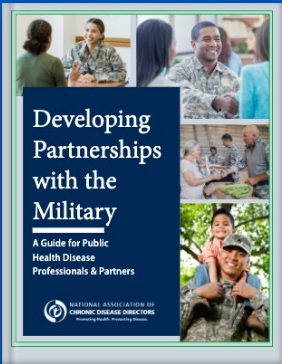Partnership Guide for Public Health Professionals
Structure of the Department of Defense
The DoD has three military departments – the U.S. Army, U.S. Navy, and U.S. Air Force. The Army is organized within its own department. The Marine Corps and the Navy are organized under the Department of the Navy, and the Air Force and recently established Space Force are organized within the Department of the Air Force. The U.S. Coast Guard operates under the Department of Homeland Security unless the President activates them for war or another purpose. When activated, the Coast Guard operates under the Department of the Navy.
The three components of the military include active duty, National Guard, and Reserve. This distinction is important, as not all service members enter the military in the same way and each component has its own subculture within the greater culture of the military. Each branch of service has its own identity and language. Service members and veterans may appreciate being asked which branch of the military they serve(d) and what they do/did during their service.
Active Duty Component Forces
The United States Armed Forces are the military forces of the United States. The armed forces consist of six service branches: the Army, Marine Corps, Navy, Air Force, Space Force, and Coast Guard. Each of the different military services is assigned a role and domain. The U.S. Army conducts land operations, while the U.S. Navy and U.S. Marine Corps conduct maritime operations, with the Marine Corps specializing in amphibious and maritime shore operations in support of the Navy. The U.S. Air Force conducts air operations, while the U.S. Space Force conducts space operations. The U.S. Coast Guard is unique in that it is a military branch specializing in maritime operations and also a law enforcement agency.
To learn more about the active duty services, hover over the logos below.
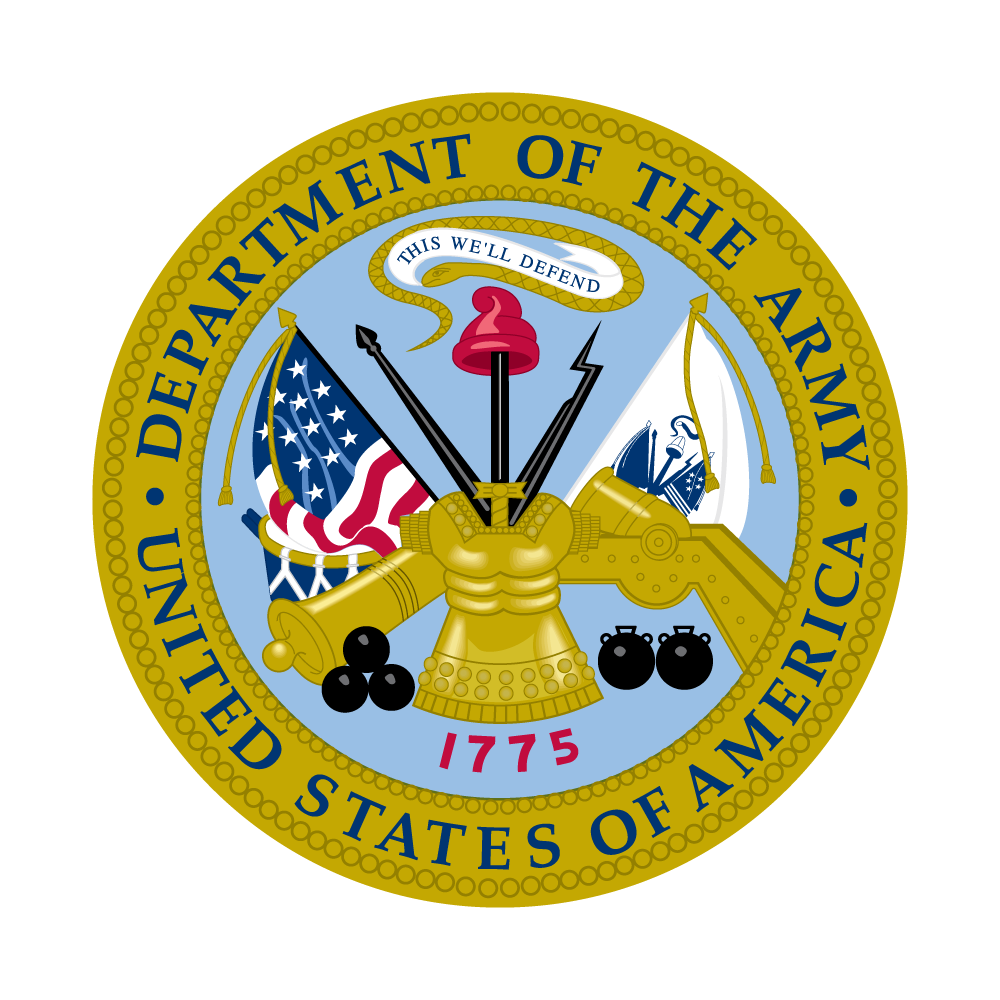
Army
"Soldier"
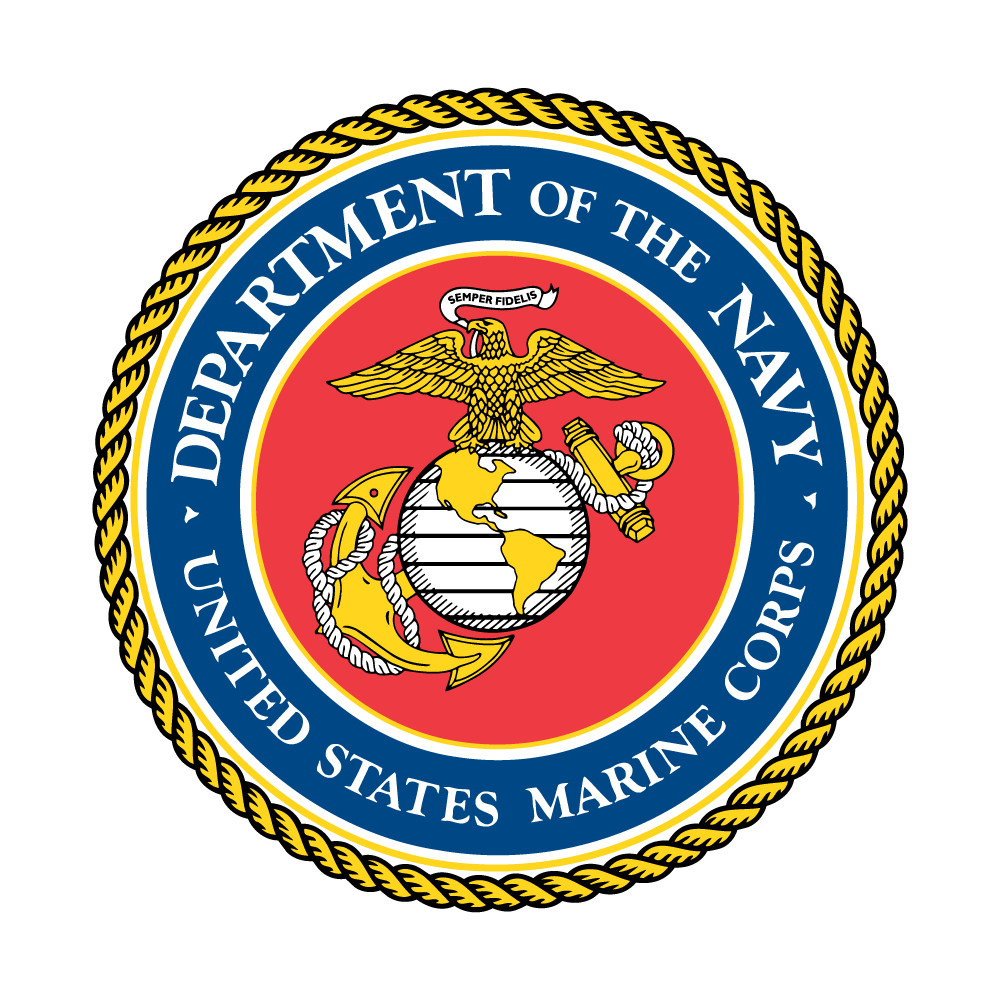
Marine Corps
"Marine"
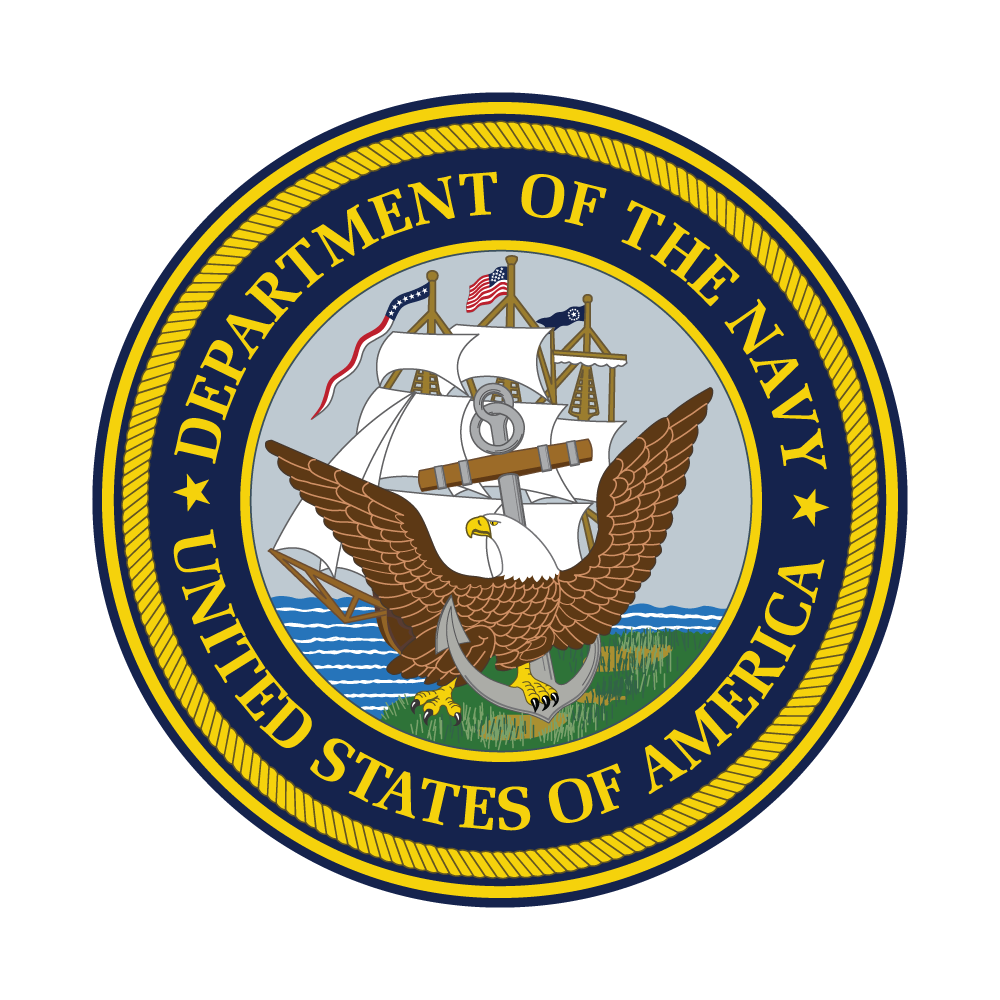
Navy
"Sailor"
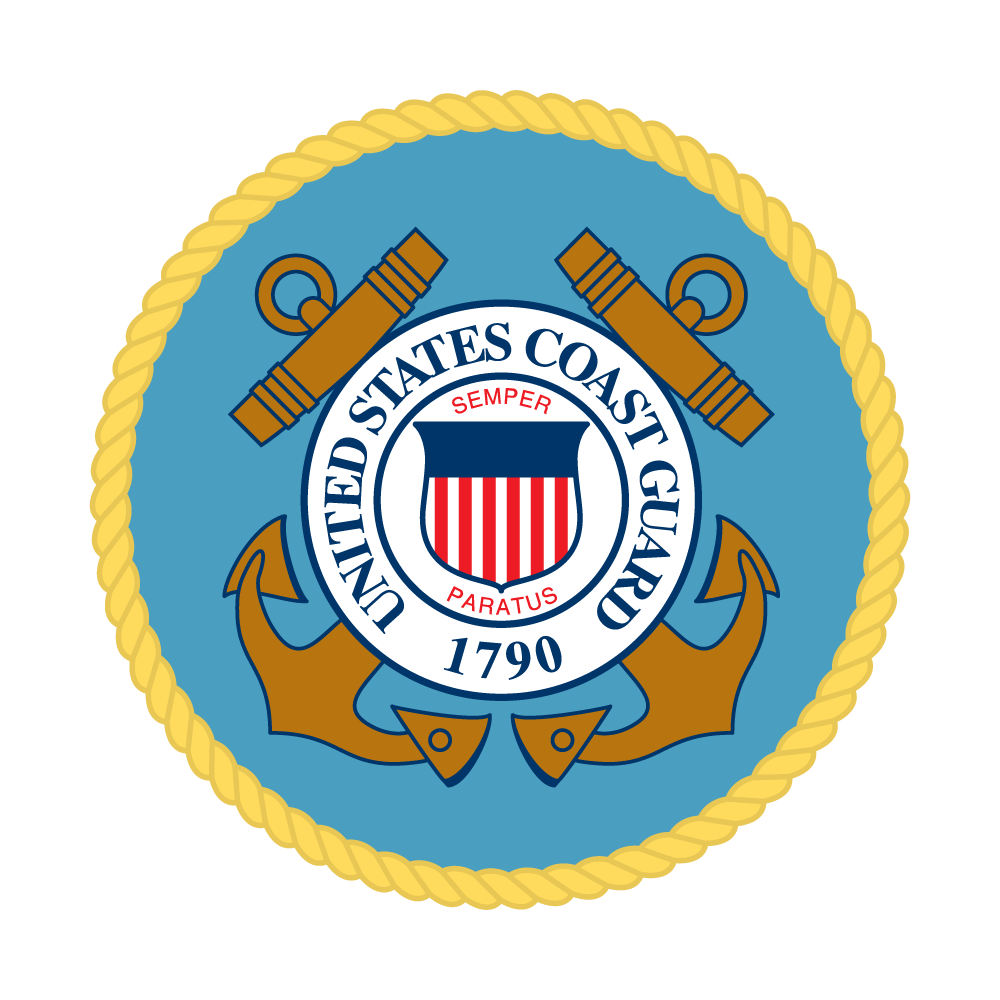
Coast Guard
"Coast Guardsman"
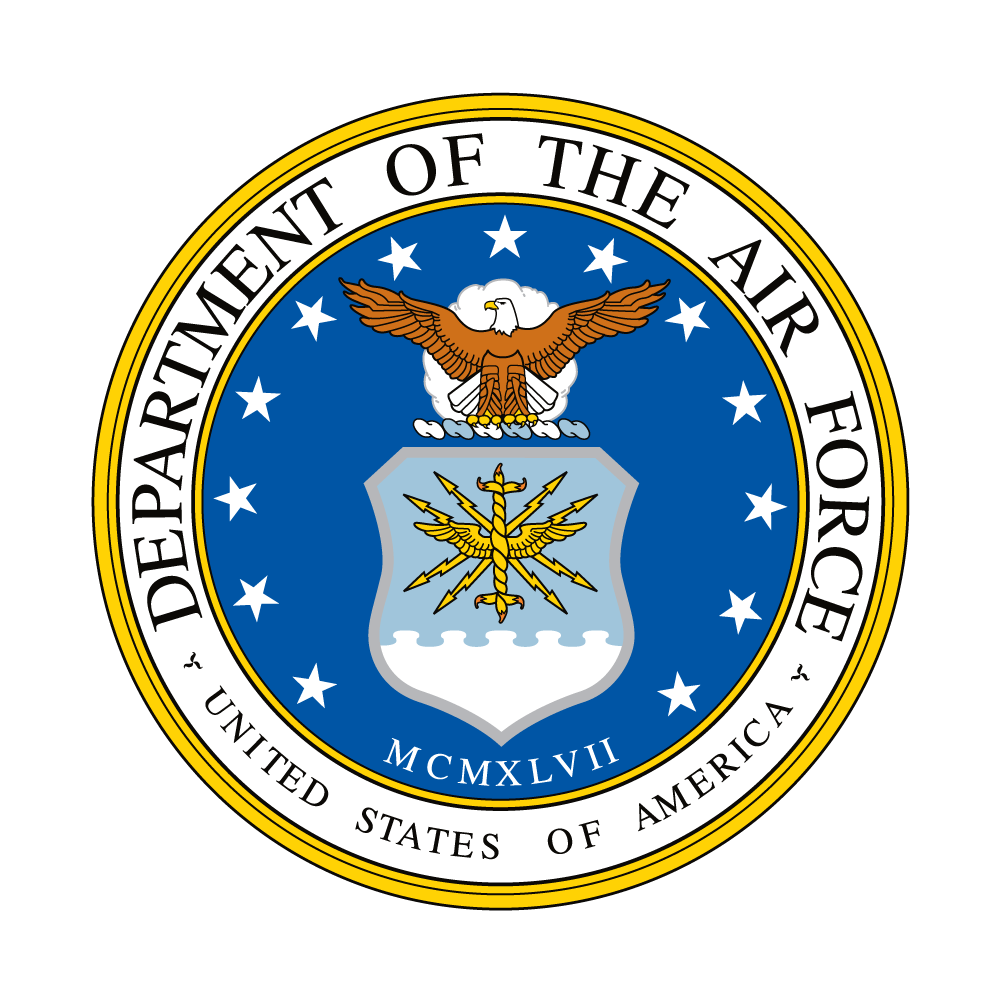
Air Force
"Airman"
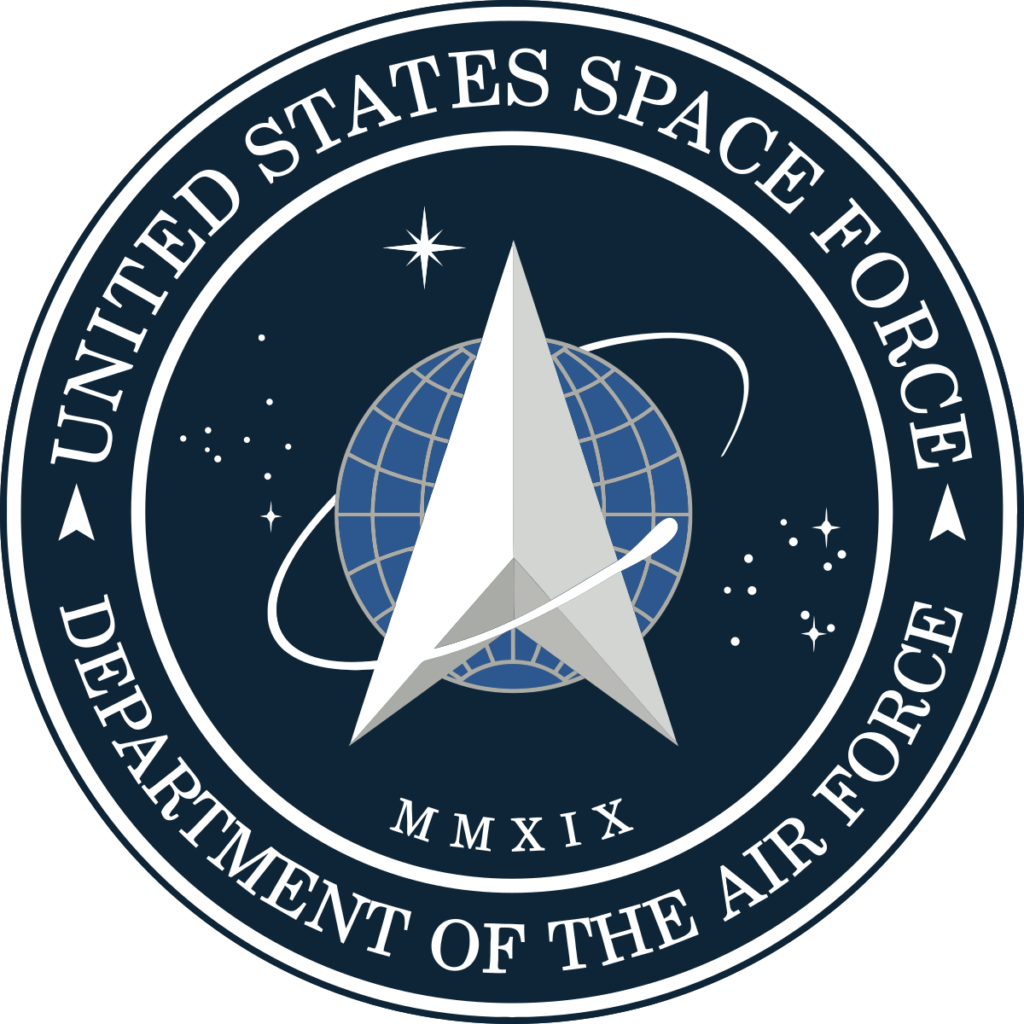
Space Force
"Guardian"
Reserve Component Forces
The reserve components of the U.S. Armed Forces are military organizations whose members generally perform a minimum of 39 days of military duty per year and who augment the active duty (i.e., full-time) military when necessary.
Reserves
The Army, Navy, Marines, Coast Guard, and Airforce all have reserve forces. The purpose of each reserve component is to provide trained units and qualified persons in times of war or national emergency and, at other times, when required to maintain national security.
Personnel in the Reserves are referred to the same as their active-duty counterparts:
- Army Reserve – Soldiers
- Navy Reserve – Sailors
- Marine Corps Reserve – Marine
- Coast Guard Reserve – Coast Guardsman
- Air Force Reserve – Airmen
Both reserve and National Guard units train, known as drill, one weekend a month plus two weeks a year for annual training, and must serve a certain number of hours each year to qualify for benefits and retirement. Many units perform training well beyond this minimum. After 9/11, the operations tempo (frequency of being called into active-duty status) for reserve and national guard units greatly increased.
The leadership and support services for reserve and National Guard units are full-time, active-duty personnel; however, most hold a civilian job full-time in addition to serving in their military role.
National Guard
Comprised of the Army National Guard and the Air National Guard, the National Guard is a versatile force, supporting combat missions, domestic emergencies, humanitarian efforts, homeland security operations, and more. Each state (including the District of Columbia) and U.S. territory has a National Guard unit that reports to their respective governor. The District of Columbia reports directly to the President. National Guard units can be activated for federal duty by the President and when they are, they report to the President.
In each state, the Army and Air National Guard share leadership at the top levels, known as Joint Force Headquarters (JFHQ). JFHQs are often part of a state agency for military affairs.
Army and Air National Guard personnel are referred to as Guardsmen.
State Defense Forces
Twenty-two states have additional state defense forces (SDF) that operate under the sole authority of the state. SDFs exist primarily to support and augment National Guard forces during domestic crises and to take its place should it be federalized and sent away to war. SDFs are called various names (Georgia State Defense Force, California State Guard, Indiana Guard Reserve, etc.). Locate your State Defense Force webpage.
SDF personnel (either work or volunteer) are referred to as Soldiers.
Structure of the Department of Veterans Affairs
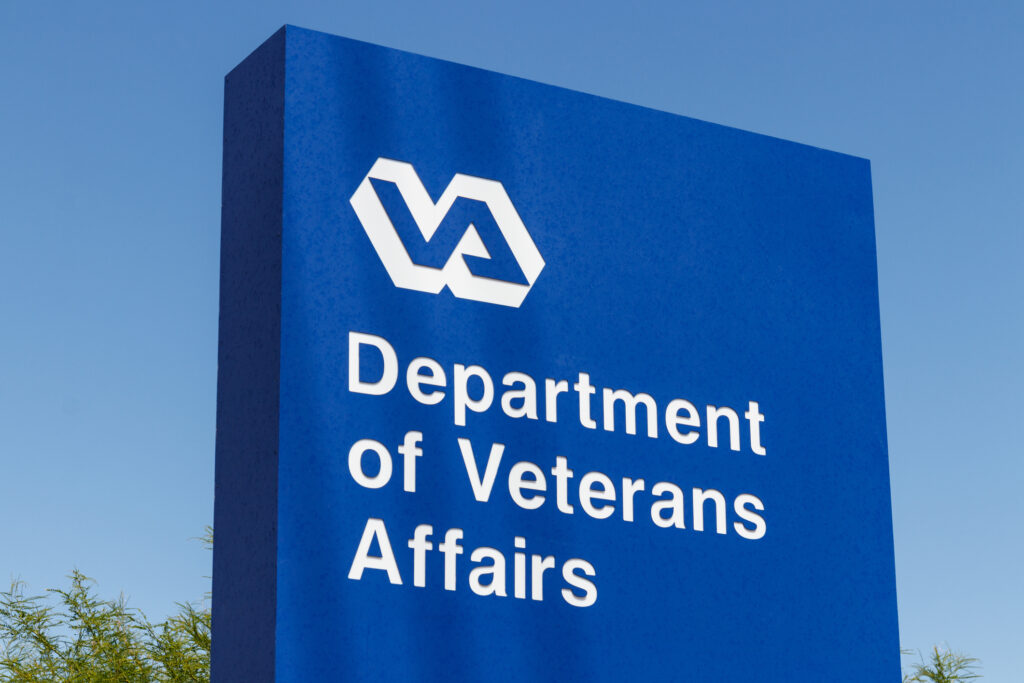 The Department of Veterans Affairs (VA is an agency of the federal government that provides benefits, healthcare, and cemetery services to military veterans. The Secretary of Veterans Affairs, a cabinet-level official, is appointed by the President. The VA is the federal government’s second largest department after the DoD; it operates independently from DoD, but the two organizations collaborate across several areas.
The Department of Veterans Affairs (VA is an agency of the federal government that provides benefits, healthcare, and cemetery services to military veterans. The Secretary of Veterans Affairs, a cabinet-level official, is appointed by the President. The VA is the federal government’s second largest department after the DoD; it operates independently from DoD, but the two organizations collaborate across several areas.
States, the District of Columbia, and U.S. Territories also operate state and territorial veteran’s affairs departments. While independent from VA, these departments are key partners in the mission to take care of veterans and their survivors.
State veteran’s agencies primarily assist veterans with accessing and applying for federal VA care and benefits. In addition to connecting veterans to federal resources, each state government offers additional services to their veterans such as tax exemptions and education benefits. Contact information for state and territorial veteran’s agencies is available on National Association of State Directors of Veteran’s Affairs search page.
Service Member and Family Demographics
The Military Lifecycle
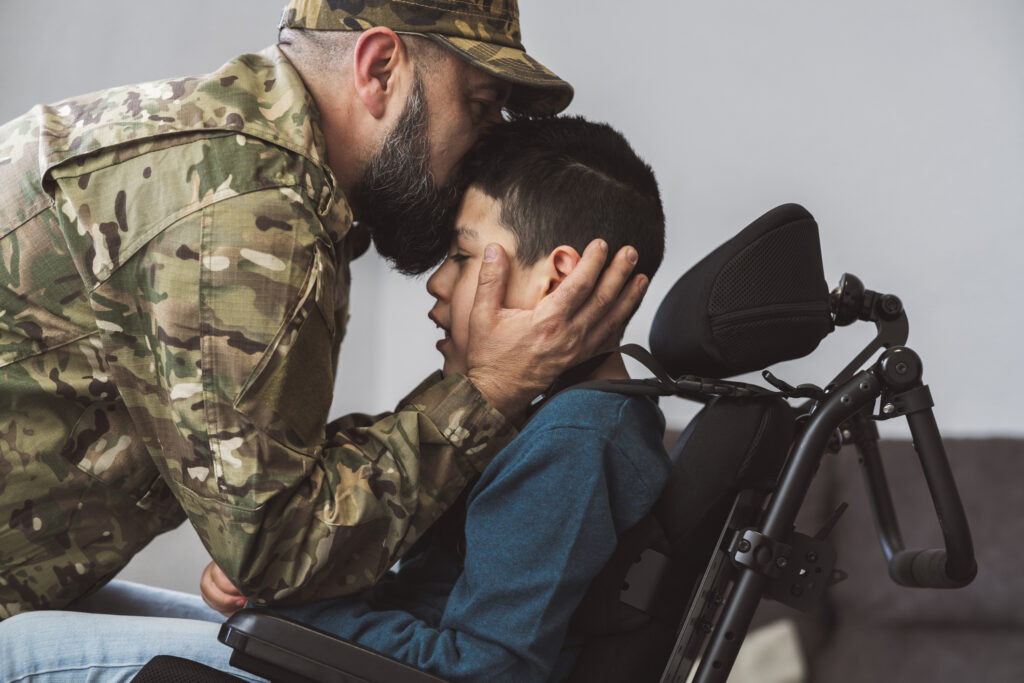 Every fiscal year, DoD publishes a demographics report that provides a detailed overview of the military community – from active-duty and reserve members to their spouses and children. The report includes gender, race, age, education, family members, pay grades, installation populations, and other important facts.
Every fiscal year, DoD publishes a demographics report that provides a detailed overview of the military community – from active-duty and reserve members to their spouses and children. The report includes gender, race, age, education, family members, pay grades, installation populations, and other important facts.
Quick Stats as of 2022:
- There are approximately 2.6 million service members including active-duty and reserve military personnel
- 31% of active-duty members identify with racial minority groups, and 17.7% are Hispanic or Latino3
- 82.7% identify as male and 17.3% identify as female (gender identity is not tracked by DoD)3
- 60% were age 30 or younger3
- Approximately 50% of service members are married and 35% had children3
- Single parents make up about 6% of the force3
- About 2% of personnel are in dual-military marriages, meaning both members of the couple are U.S. service members3
- Approximately two-thirds of military personnel live off base4
3Department of Defense Demographics Profile (2021). https://www.defenseculture.mil/Portals/90/Documents/Research/Publications/DEMORPT-2021_demographics_report-20230203.pdf
4 Else, D.H. (2001). Military Housing Privatization Initiative: Background and Issues. Report to Congress. Order code RL31039, July. Washington, DC: Congressional Research Service https://digital.library.unt.edu/ark:/67531/metacrs9280/m1/1/high_res_d/RL31039_2001Jul02.pdf
The initial commitment for 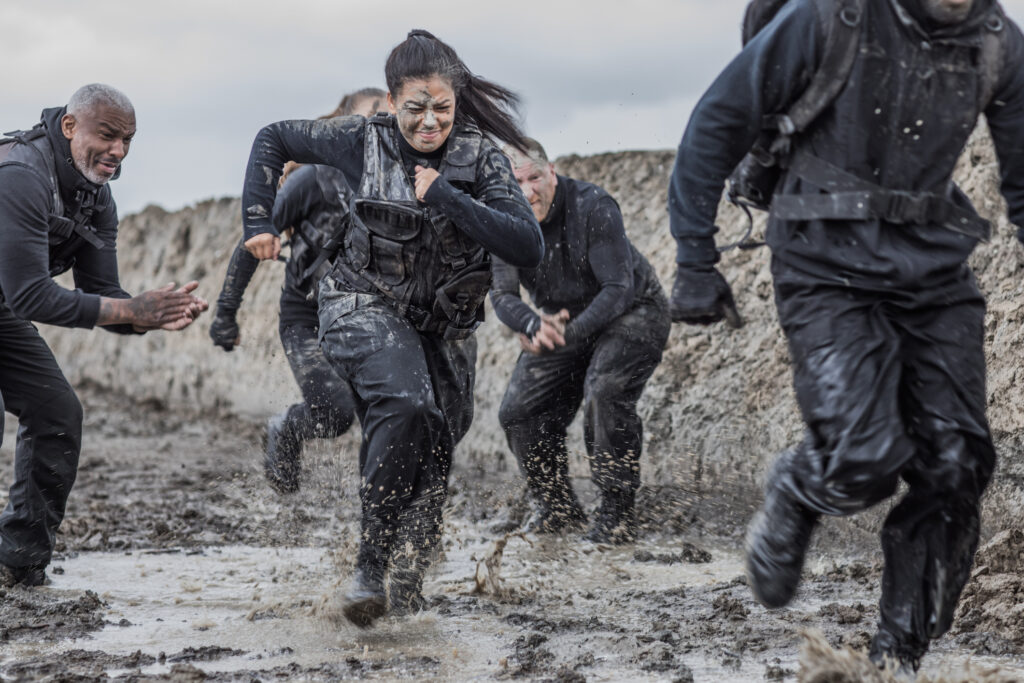 military personnel is eight years, but how this is broken up depends on the service branch military occupational specialty (i.e., job). The following summary by Swords to Plowshares outlines the military lifecycle and describes stressors and challenges associated with each phase of the lifecycle.
military personnel is eight years, but how this is broken up depends on the service branch military occupational specialty (i.e., job). The following summary by Swords to Plowshares outlines the military lifecycle and describes stressors and challenges associated with each phase of the lifecycle.
Service members usually spend four years on active duty and another four years in the reserves. Military personnel cede many of what we think of as fundamental rights of a U.S. citizen including freedom of speech or expression, freedom of assembly, and due process under the law. For example, although military personnel still have the right to vote and practice their religion, it is up to their military command as to when they may exercise those rights. In addition to the laws of the land, they are also governed by the Uniform Code of Military Justice and violators may be subject to non-judicial punishment, reduction in rank, reduced pay, and restricted nutrition intake for a specific amount time, as determined by command. In other words, the commitment is all encompassing and is generally made when the recruit is in their late teens.
The United States military prides itself on values. Each of the services has their own set of values but all value of discipline, teamwork, self-sacrifice, loyalty, and fighting spirit. Key elements of military culture include:
- Strict chain of command, routine, and structure
- Emphasis on respect for authority and self
- Image of strength and self-reliance
- Commitment to honor and trustworthiness
- Value of aggression and acting faster and harder
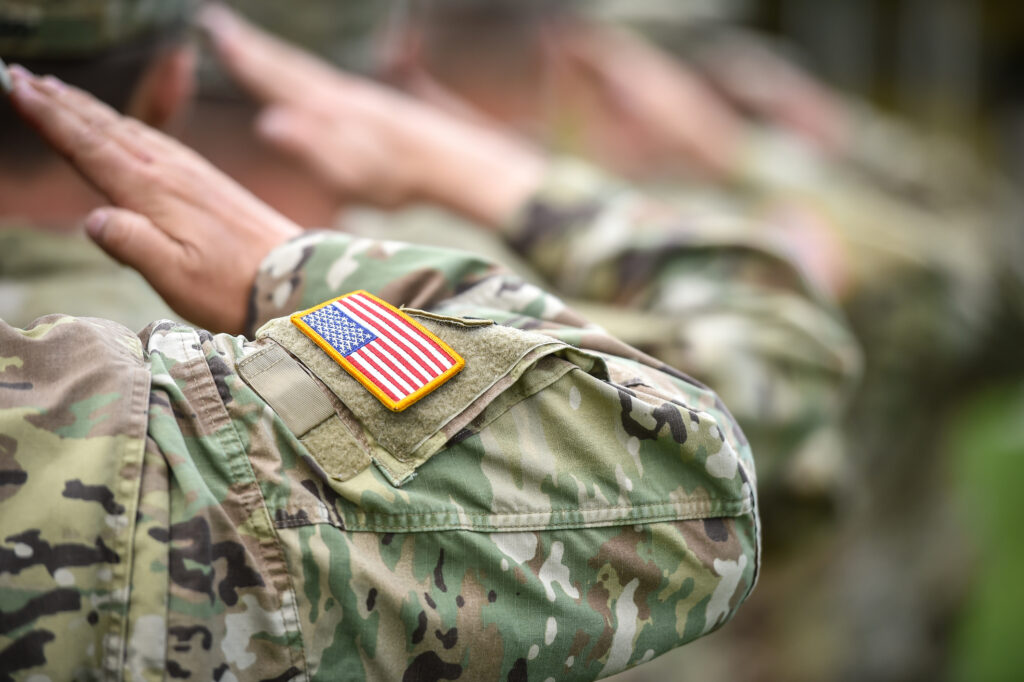 People choose to join the military for many reasons including family tradition, patriotism, training, leadership opportunities, education and housing benefits, and adventure.
People choose to join the military for many reasons including family tradition, patriotism, training, leadership opportunities, education and housing benefits, and adventure.
Serving in the armed forces impacts individuals in numerous ways. The PsychArmor Institute surveyed hundreds of veterans about what they wanted civilians, employers, educators, health care providers, and therapists to know about them. Below are key messages obtained by the survey.
- Remember that not all service members are “soldiers.” Each branch of the U.S. Military has their own mission, subculture, and terminology. Use terms such as “military personnel” or “veterans” as reference, and do not generalize all as “soldiers”.
- The Reserves are part of the military. Reservists and National Guard members have unique challenges due to abrupt transitions between civilian life and military duty, which can be disruptive to work and family life. They often do not have similar resources and support as active-duty military personnel when they return from missions. Both reserves and active duty balance and complement each other.
- Not everyone in the military is infantry. Jobs range from infantry to technicians, mechanics, cooks, administrators, lawyers, doctors, and musicians.
- The military is always on duty. Readiness is a full-time, around the clock job and this takes a toll on military personnel and their families.
- Not all service members have killed someone. Those who have do not want to talk about it. Do not question military personnel or veterans about this topic.
- Not all military personnel have post-traumatic stress disorder. Post-traumatic stress disorder (PTSD) can be caused by many different types of trauma including combat. Most people who experience trauma do not go on to develop PTSD; the majority have naturally recovered and are doing fine.
- It is hard for service members to ask for help. The military has a long-standing history of promoting emotional and physical perfection. Understanding that it is hard for service members to ask for help can help you serve them better.
- Veterans differ in how much they identify with the military after they leave active duty. For example, some veterans who were not deployed in combat may not consider themselves veterans, although they are.
- Military families serve alongside their service member. The military family’s experience is unique and challenging with frequent separation from loved ones. Some military families move every two or three years, making it difficult to establish school and employment. Military families are resilient, adaptive, and flexible.
For a deeper understanding of military life and stressors, read the National Academies of Sciences, Engineering, and Medicine’s report, Strengthening the Military Family Readiness System for a Changing American Society.
There are several open access data repositories that can offer insight on the health outcomes and behaviors of service members and veterans.
- Benefits
- Large, representative survey of the active-duty force
- Covers many topics of interest to public health (physical activity, chronic conditions, etc.) and stratifies data by rank, race/ethnicity, and other demographic variables
- Limitations
- Reports have significant lag time from data collection to publishing
- Does not provide state- or local-level data
- Benefits
- Only publicly available health behavior data for service members
- Collected and reported annually
- Limitations
- Does not include health information from other services
- Benefits
- Updated quarterly
- Limitations
- Does not include personnel on temporary duty or deployed in support of contingency operations
- Benefits
- Provides two ways to view the data: via data visualization or via PDF report
- Provides a full accounting for all service components
- Includes installation populations
- Limitations
- Does not provide state- or local-level data
- Does not include data on long-term nonmarital partners, parents, ex-spouses and ex-partners, and others who play a significant role in the care of military children and service members
- Benefits
- Provides data on upstream influencers of health (housing, legal, financial)
- Identifies resources in the community (Tricare behavioral health providers, Homeless Veterans Reintegration Program, etc.)
- Limitations
- Most indicators are based on community data
Military Families
Blue Star Families Annual Military Family Lifestyle Survey
Blue Star Families’ annual Military Family Lifestyle Survey (aMFLS) provides insight into the experiences and challenges encountered by military families.
- Benefits
- Largest and most comprehensive survey of active duty, guard, and reserve service members, veterans, and their families
- Covers upstream issues such as financial security and neighborhood/built environment
- More than half of the respondents are spouses or partners of service members or veterans
- Limitations
- Some service branches are represented more than others
MilitaryINSTALLATIONS
DoD maintains a website directory called MilitaryINSTALLATIONS, which provides locations of installations around the world and descriptions of programs or services, with related contact information, for DoD installations, military bases, and state and federal resources. (The search fields do not recognize acronyms. Enter the full spellings of states and installations. For example, NAS Jacksonville should be entered as Naval Air Station Jacksonville.)
Military OneSource
Military OneSource is both a call center and a website. It provides comprehensive information, referral, and assistance on every aspect of military life 24 hours a day, seven days a week to all component members of the Armed Forces, their family members, and survivors.
In addition to the publicly available sources outlined above, DoD routinely collects service member health data through periodic health assessments (PHA). PHAs include:
- Self-reported health status
- Measurement and documentation of vitals (height, weight, BP)
- Vision screening
- Medical conditions review with healthcare provider
- Focused exam of identified conditions (as required)
- Cardiovascular Screening Program Services (as required)
- Recommendations for improvement of identified health conditions
- Behavioral health screen
- Laboratory Services (as required)
- Immunizations (as required)
The service branches also collect their own health behavior data. One notable example is the Army’s Unit Risk Inventory (URI), which provides Soldiers the opportunity to give an honest, anonymous assessment of their well-being.
While PHA and URI data are not available to the public, it is important to understand that military leaders have access to robust sources of health data for their populations.

